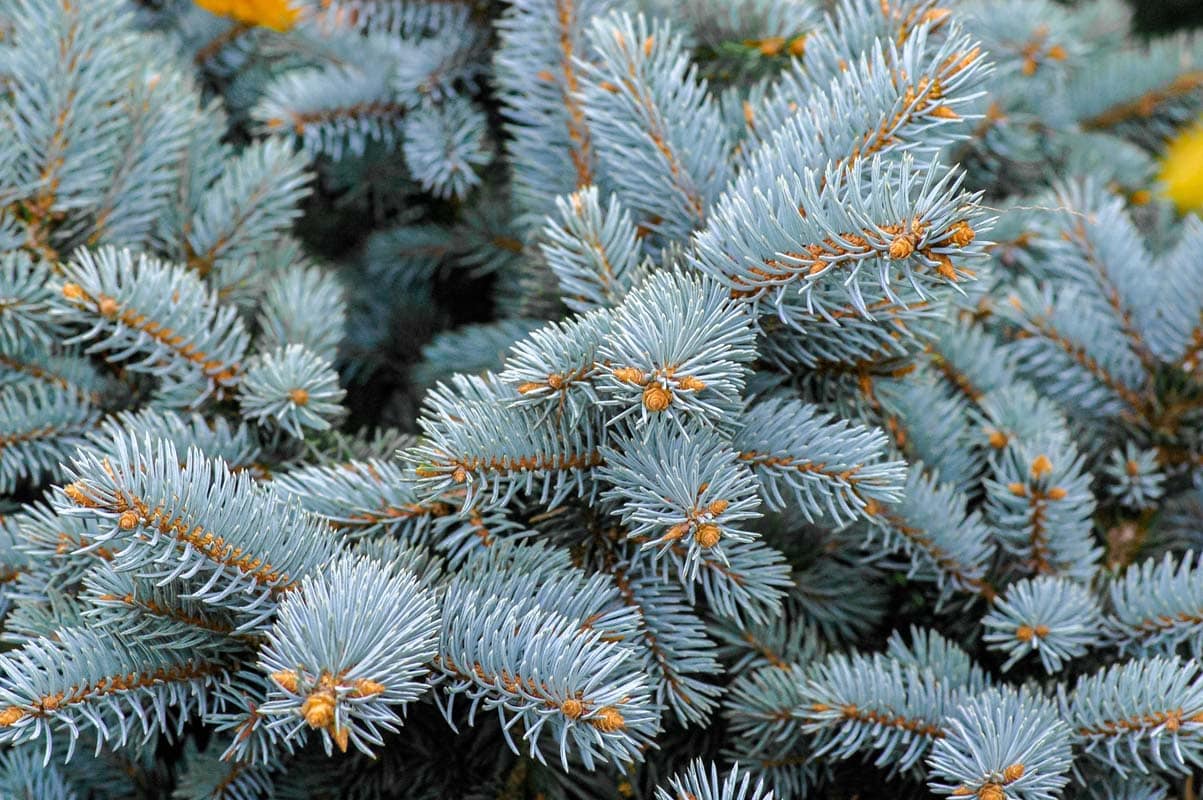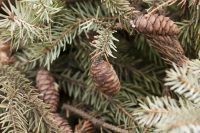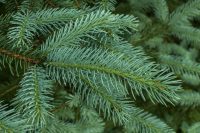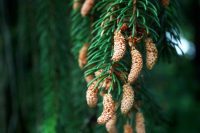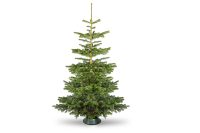Blue spruce (Picea pungens) is non-toxic to dogs and is safe to keep in homes or gardens as long as precautions are taken to keep household pets safe.
What is blue spruce?
| Family | Pinaceae |
| Botanical name | Picea pungens |
| Common names | Hickory pine, White spruce, Green spruce, Silver spruce, Colorado spruce |
| Mature height | 20 – 25 metres (65 – 82 feet) |
| Needle retention | Excellent needle retention |
| Scent | Pine and evergreen |
| Native to | North America |
| Toxicity | Non-toxic |
Blue spruce (Picea pungens) is a slow-growing, compact evergreen conifer native to North America. The shape of blue spruce is pyramidal, with short, somewhat prickly, stunning silvery-blue needles making it one of the most popular Christmas trees.
In the farm, blue spruce makes an effective windbreak and nesting site for wildlife and is widely cultivated as an ornamental in the home garden. The fast-burning wood makes it ideal for kindling.
This easy-to-care-for tree prefers full sun, and moist, well-drained soil. Fertilise with a nitrogen fertiliser once a year.
Related: Caring for a Christmas tree
Safety
While blue spruce is classed as non-toxic to dogs, there are still risks associated with keeping Christmas trees in homes with dogs. The following safety precautions should always be followed.
- Do not add additives or aspirin to the tree stand as both are toxic to dogs.
- Invest in a sturdy tree stand and always secure the Christmas tree to the wall or ceiling with fishing line to prevent it from falling over.
- Hang breakable decorations high up on the tree.
- Do not hang food on Christmas trees, especially chocolate which is toxic to dogs.
- Use solar lights on the tree or unplug electric lights from the socket when there is nobody around to supervise dogs.
- Avoid using tinsel that can be swallowed and form a blockage or telescoping of the intestines. Telescoping of the intestines (intussusception) is a serious condition that occurs when one end of the tinsel becomes lodged, usually under the tongue, while the free end travels down the GI tract. The GI tract creeps up the tinsel, causing them to telescope in on themselves.
Toxicity of Christmas trees
Common name |
Scientific name |
Toxicity level |
| Norway spruce | Picea abies | Non-toxic |
| Blue spruce | Picea pungens | Non-toxic |
| Serbian spruce | Picea omorika | Non-toxic |
| White spruce | Picea glauca | Non-toxic |
| Nordmann fir | Abies nordmanniana | Non-toxic |
| Fraser fir | Abies fraseri | Non-toxic |
| Douglas fir | Pseudotsuga menziesii | Non-toxic |
| Noble fir | Abies procera | Non-toxic |
| Balsam fir | Abies balsamea | Non-toxic |
| Grand fir | Abies grandis | Non-toxic |
| Scotch pine | Pinus sylvestris | No information available |
| White pine | Pinus strobus | No information available |
| Virginian pine | Pinus virginiana | Toxic |
| Norfolk Island pine, house pine | Araucaria heterophylla | Non-toxic |
Julia is a writer and landscape consultant from Wollongong with a love of horticulture. She had been an avid gardener for over 30 years, collects rare variegated plants and is a home orchardist. Julia is passionate about learning and sharing her knowledge of plant propagation and plant toxicology. Whether it’s giving advice on landscape projects or sharing tips on growing, Julia enjoys helping people make their gardens flourish.
